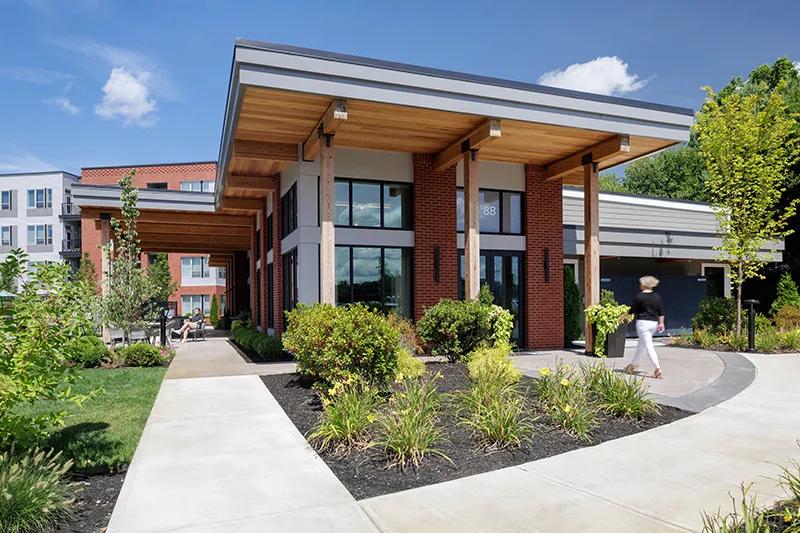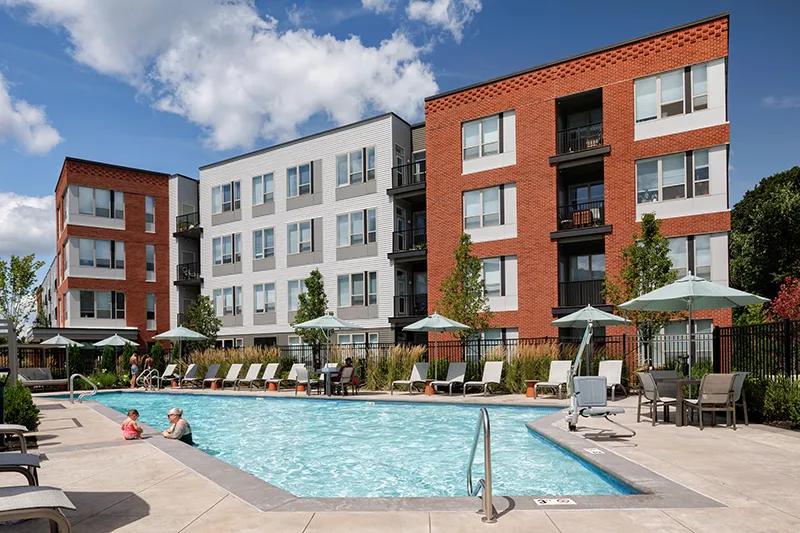We recently met with Pourita Das, a project architect/project manager at The Architectural Team, Inc. in Boston, Massachusetts. Curious about architecture and nature from a young age, Das shares her career journey that spans continents and languages, plus reveals what she thinks is the most pressing issue for the architecture, design, and construction (AEC) industry today.
What inspired you to pursue a career in architecture?
From a young age, I was attracted to the interplay of form, function, and aesthetics in our built environment. Growing up in India, I did not have access to LEGOs, so I managed to create makeshift “LEGO blocks” with cardboard. I spent hours building abstract shapes with cardboard pieces, each creation a result of the power of imagination and design. This fascination deepened during family trips, where I marveled at iconic landmarks and their seamless blend of art and engineering.
My passion for architecture was further ignited in high school, where a transformative art class introduced me to the principles of design and spatial harmony. Growing up in a small town at the foothills of the Himalayas in Northeast India, I experienced the profound impact between nature and architecture. I witnessed how well-designed spaces harmonize with their natural environment and enhance people’s lives. This experience solidified my desire to create environments that inspire, nurture, and bring communities together.
To me, architecture is more than just constructing buildings—it’s about creating experiences and enhancing the quality of life for end users. With every project, I strive to balance creativity with functionality, honoring the natural environment while innovating for the future. This journey, inspired by a blend of childhood experiences, educational experiences, and real-world awareness, continues to deepen my passion for architecture.
Tell us about your journey to U.S. licensure as an English as a Second Language (ESL) candidate through the Foreign Architect Path.
While studying architecture in India, I developed my love for architecture, drawn to the intricate designs and cultural significance of our vernacular buildings. After completing my degree, I came to the United States to explore opportunities for growth and innovation. I started my architectural journey in the U.S. by earning my master’s degree in architecture at Boston Architectural College.
Achieving licensure in the U.S. as an ESL candidate required unwavering dedication. I began by having my Indian and U.S. credentials evaluated by the NCARB. Balancing the demands of studying for the Architect Registration Examination (ARE) while improving my English proficiency was challenging. I studied for ARE relentlessly and sought support from mentors and peers. Each division I passed of the ARE, structured to reflect current architectural practices, was the result of hard work and determination. Achieving licensure was a milestone that represented years of commitment.
My journey to U.S. licensure reflects the resolve required to succeed as a foreign architect. It represents my passion for architecture and my eagerness to create spaces that inspire and unite communities.

What advice do you have for other immigrants and international architects looking to become architects in the U.S.?
The path to becoming a licensed architect in the U.S. as an immigrant is achievable. Thorough preparation, a clear understanding of the requirements, and proactive networking are key to success. Stay focused, seek support, and leverage available resources to navigate the process.
The journey starts with careful planning, dedication, and a full understanding of NCARB’s requirements. When I began working as an intern, I made sure that I followed the AXP requirements as a guideline to gain the necessary practical experience required for licensure.
It is important to update your portfolio and resume to meet industry standards, highlighting relevant international experience. Stay informed regarding industry advancements and pursue continuous education to enhance your expertise. Seeking guidance from a mentor can also be valuable. Remaining focused and determined while leveraging resources is essential for achieving success in this journey.
You're currently a project architect/project manager at The Architectural Team, Inc. in Boston, Massachusetts. Can you tell us what a typical day looks like for you?
As a project architect at The Architectural Team (TAT), my days are both dynamic and fulfilling, reflecting the diverse range of projects at the firm. Each morning begins with a to-do list where I review project progress, set daily goals, and address any emerging challenges. On most days, it is a collaborative approach with the project team to ensure everyone is aligned.
Mid-morning, I dive into design work to develop detailed architectural drawings. This involves working with interdisciplinary engineers, consultants, and interior designers to integrate their work into our designs. Communication is essential, so I spend a significant amount of time in meetings to keep everyone informed and coordinate project workflows.
Some days involve site visits to monitor progress, address on-site issues, and ensure compliance with design specifications. These visits are crucial for maintaining project timelines and ensuring construction administration quality. In the afternoon, I focus on project management tasks, such as scheduling, preparing reports for clients, and addressing specific design requirements of a project.
To me, architecture is more than just constructing buildings—it’s about creating experiences and enhancing the quality of life for end users.
Beyond my daily responsibilities, I take pride in mentoring junior and co-op architects, providing guidance and fostering their professional growth. I end my day by reflecting on the day’s accomplishments, lessons learned, and planning for the next steps. This combination of creative design, detailed technical work, and team collaboration makes each day exciting and rewarding.

What do you think is the most pressing issue for those in the AEC industry today?
I believe the most pressing issue for the architecture, engineering, and construction (AEC) industry is the urgent need for sustainable and climate-resilient design. As climate change accelerates, the AEC industry needs to quickly adapt by implementing strategies to create built environments that minimize environmental impact and withstand extreme weather events.
Additionally, newer regulations and market demands are increasingly focused on continued improvement in sustainability metrics. At the same time, balancing cost concerns for sustainable development with project economics is another challenge. While sustainable solutions often yield long-term savings, the initial investment can be a barrier for many projects. The AEC industry must find ways to make sustainable practices economically viable, ensuring that environmentally friendly designs become the standard rather than the exception. This evolution is vital for the AEC industry’s role in mitigating global environmental impacts.
Want to hear more from architects across the U.S.? Check out the rest of NCARB's Architect Spotlight series.
